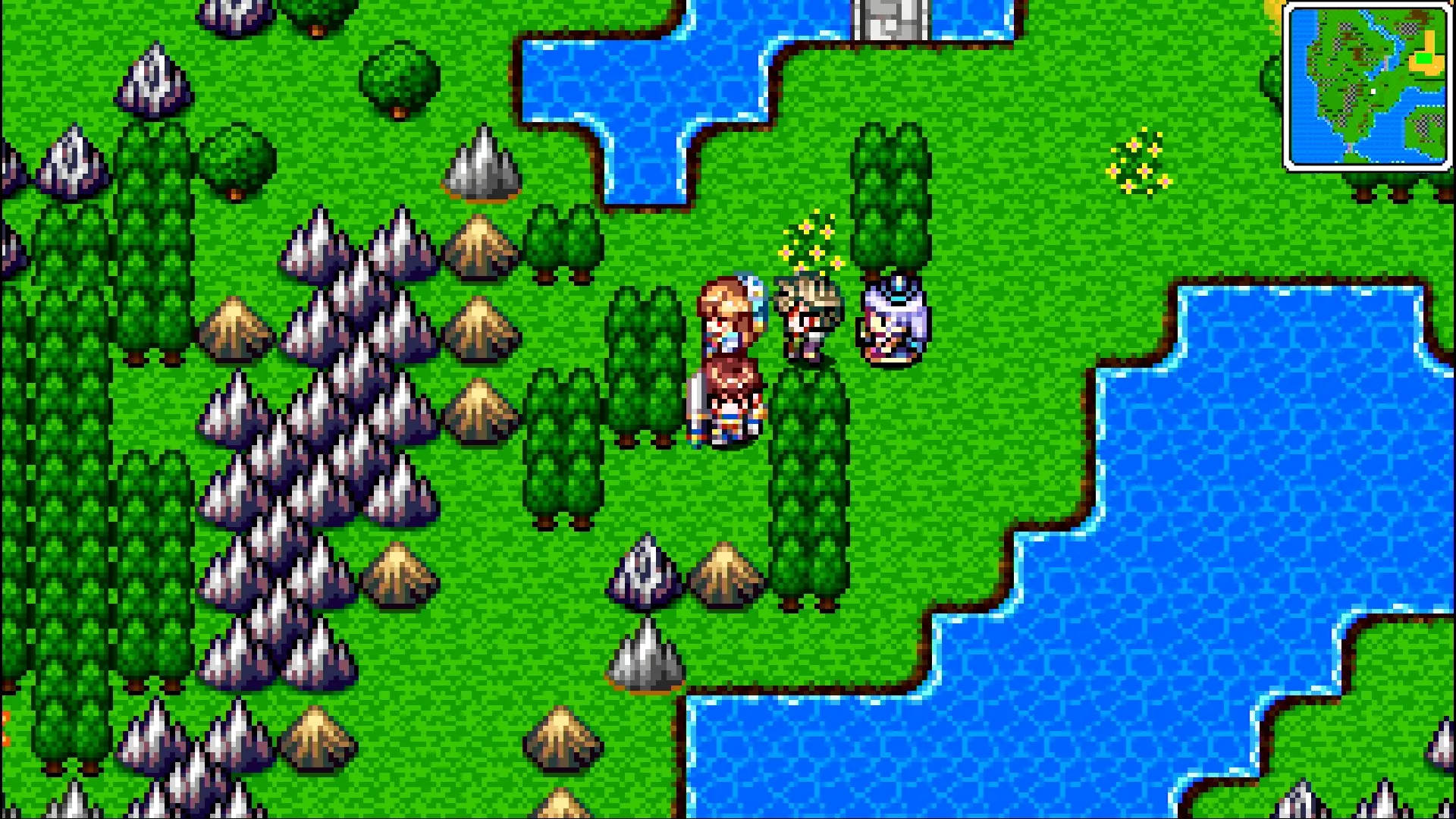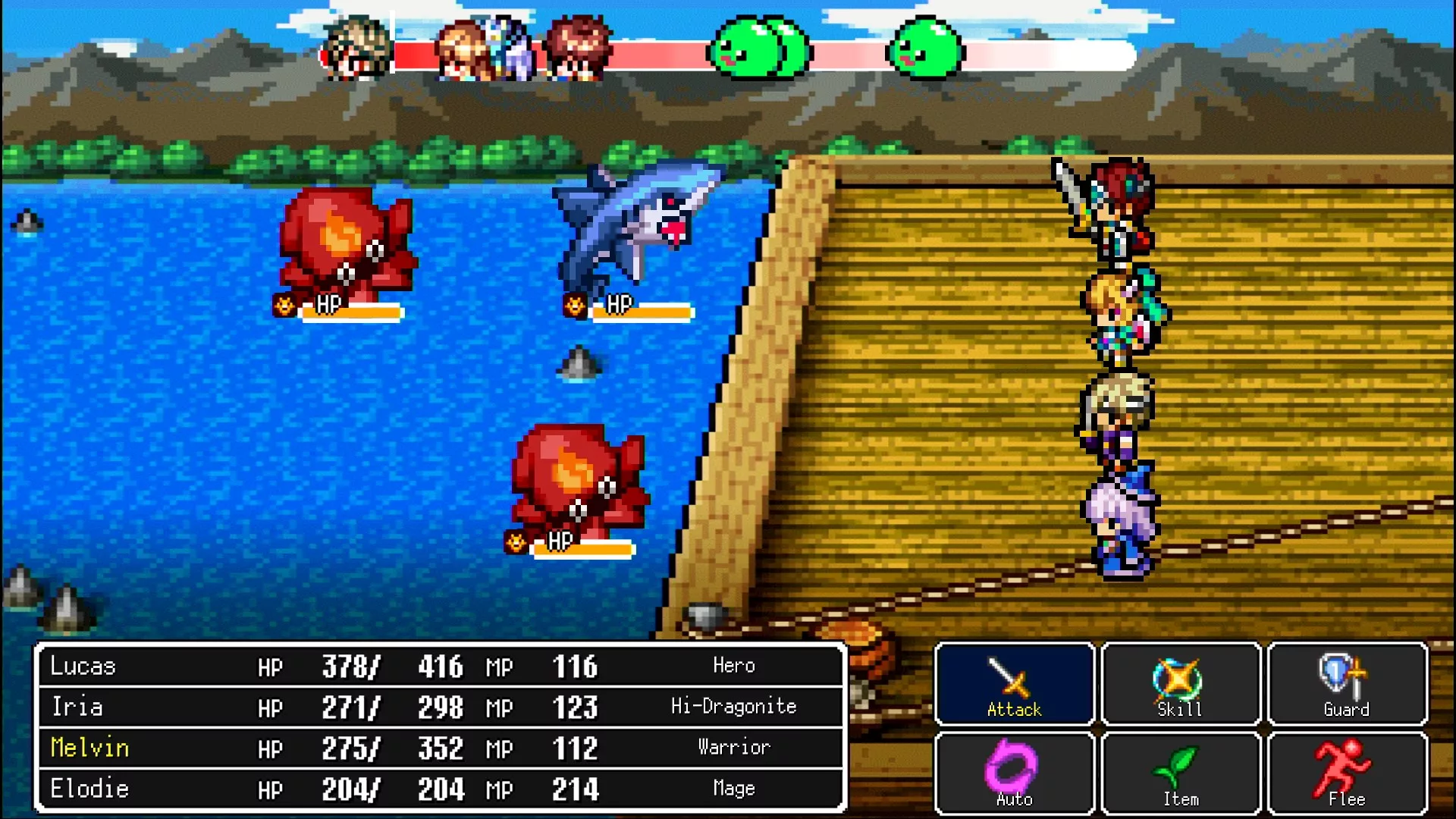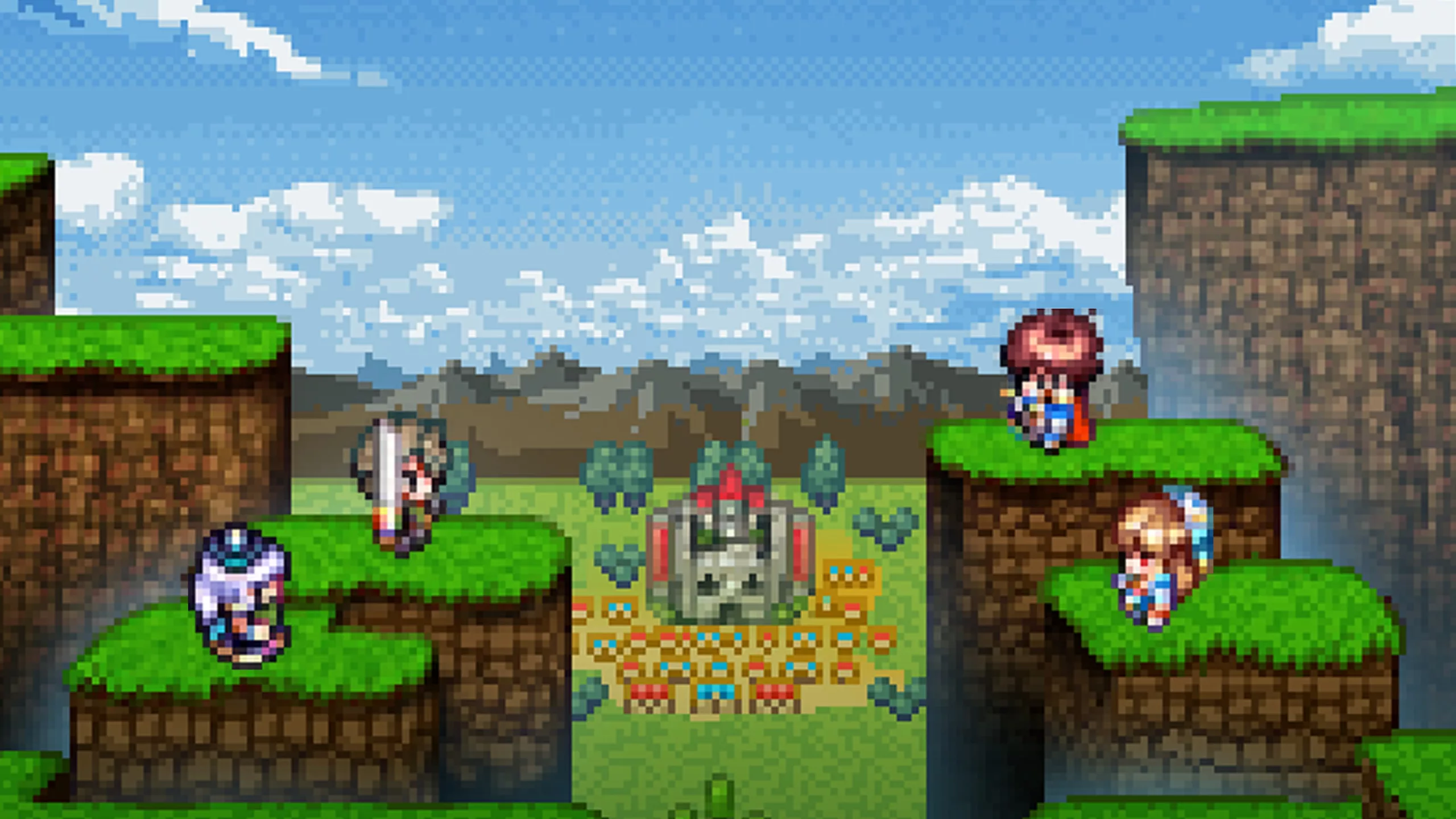Dragon Lapis follows up on a battle between two dragons, one gold and one silver, which took place over a thousand years ago. Following the battle, they are both sealed away. Unfortunately, centuries later, the Silver Dragon awakens and escapes to launch an assault on a frontier village. A royal knight, Lucas, learns that he’s a descendant of the hero who sealed both dragons away. Now that the Silver Dragon is back, it’s up to Lucas to save the world.
Dragon Lapis is another throwback JRPG from Kemco that could be straight from the NES era. You move around an overworld map, step into random encounters and fight off enemies. Battle rewards players with XP, money, and LPP. As you roam around the map, you’ll find new areas to investigate and new towns to meet new NPCs and purchase consumable items and stronger gear (weapons, armor) to survive the onslaught of dungeon crawling and random encounters.

One of the neat features of this game is that each dungeon has Pentacles; platforms that allow you to teleport through various levels of a dungeon. Obviously, they need to be activated first; meaning if you come across one before the boss’ room, you can teleport back to the entrance and if near a town, go back and refill your health, and items or purchase new gear in order to avoid death.
The game’s mechanics are surprisingly deep. While you have the typical case of constantly buying new and stronger gear, you can also assign jobs to your characters and there’s also a Final Fantasy X Sphere Grid-like system where you can upgrade your current job and skills. LPP is used to upgrade your current job, but also if you want to restart at the same spot after death. Bonus LPP can be earned by completing battle objectives such as doing a 3-hit combo or healing a team member with an item; among other different types of objectives.

The game also features conversational choices during specific conversations with NPCs. While on the surface, they come across as incidental, some choices can have an impact, positive or negative, at some point down the line. Here’s an early example. In the first dungeon, you’ll meet a soldier who’s the right-hand man of the King who’ll ask for a bribe. Refuse to bribe him and your encounter with the King will not be as positive as you’d hope.
The game looks great in all of its highly pixelated glory which is a throwback to classic Dragon Warrior(Quest) and Final Fantasy games from the golden era of gaming. The game is highly colorful as well and offers a decent background variety, but most environments will repeat throughout the story. The soundtrack is as generic as you’d expect, albeit adequately themed for an old-school-looking RPG. Obviously, it won’t reach the level of a FF or DQ soundtrack.

Dragon Lapis does have a few things that hold it back from pixelated greatness. For whatever reason, there are constant loading screens. Leave a village? Loading screen. Encounter a battle? Loading screen. Whilst they aren’t that long, it does become a nuisance over time. The first hour can also be brutal given the limited chances for grinding and low-level equipment doesn’t help. You can use your previous LPP to respawn at a boss battle if you died, but LPP is also quite useful for improving your characters.
Dragon Lapis is a mildly enjoyable, albeit very familiar RPG experience. If you’ve played a Kemco RPG, you’ve played them all. The story is pretty meh, turn-based combat is as expected, although the job system and grid-like improvement system does add a layer of refreshment to an otherwise generic, familiar experience. JRPG fans craving old-school games or a change of pace of newer RPGs should definitely look into it, but newcomers might get bored after an hour or two.
Overall
-
CX Score - 60%60%
Summary
Pros
- Job system
- Grid like system to improve characters
- Mid-battle objectives
Cons
- Generic RPG

